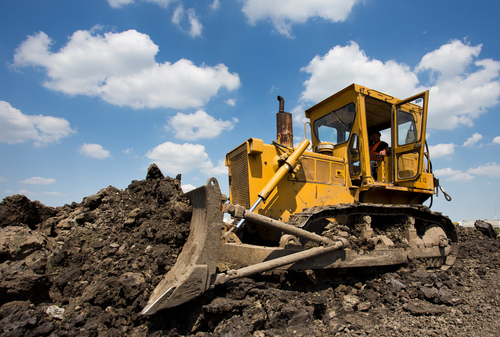Dividends can provide a steady stream of income and it’s a top wealth building strategy. So today, we’re going to review another one of the top dividend stocks around. Let’s take a look at Caterpillar’s dividend history and safety…
Business Overview and Highlights
Caterpillar (NYSE: CAT) is an American Fortune 100 corporation. The $72 billion business develops, manufactures, and sells machinery, electronics, and financial products. The company is based out of Illinois and it employs 104,000 people. Last year Caterpillar pulled in $55 billion in sales and that breaks down to $526,000 per employee.
The company operates within the industrial sector and has an A credit rating from the S&P. This allows Caterpillar to issue cheap debt to grow the business and finance other projects.
On May 2, 2019, Caterpillar’s board of directors declared an increase to the quarterly cash dividend. The new dividend of $1.03 per share represents a 20% increase from the previous quarterly dividend of $0.86. The new dividend will be made payable August 20 to shareholders of record at the close of business on July 22.
With the recent dividend increase, Caterpillar is now a Dividend Aristocrat.
Caterpillar’s 10-Year Dividend History
The company paid investors $1.68 per share a decade ago. Over the last 10 years, the dividend has climbed to $3.36. That’s a 100% increase. Here are the annual changes…
 The compound annual growth is 7.2% over 10 years… but over the last year, the dividend climbed 8%. The increase in dividend growth is a positive. Caterpillar might work out as a great income investment. Let’s take a look at the yield…
The compound annual growth is 7.2% over 10 years… but over the last year, the dividend climbed 8%. The increase in dividend growth is a positive. Caterpillar might work out as a great income investment. Let’s take a look at the yield…
Current Yield vs. 10-Year Average
Caterpillar’s long history of paying dividends makes it one of the best dividend stocks around. This also makes the dividend yield a great indicator of value. A higher yield is generally better for buyers. sustainability is also vital and we’ll look at that soon.
The dividend yield comes in at 3.27% and that’s above the 10-year average of 3.21%. The chart below shows the dividend yield over the last 10 years…

The higher yield shows that investors have bid down the company’s market value. They might be expecting higher growth and payouts. But more often than not, the dividend yield is mean reverting with share price changes.
Improved Dividend Safety Check
Many investors look at the payout ratio to determine dividend safety. They look at the dividend per share divided by the net income per share. So, a payout ratio of 60% would mean that every $1 Caterpillar earns, it pays investors $0.60.
The payout ratio is an indicator of dividend safety… but accountants can alter net income. They adjust for goodwill and other non-cash items. Free cash flow is a more useful metric.
Caterpillar’s payout ratio based on free cash flow over the last 10 years has been steady. In 2012 the company increased its capital spending which decreased the free cash flow to around $100 million. But the next year the free cash flow was back around $5 billion.
Caterpillar is financially healthy. Last year the company reported a payout ratio of 54.6%. This gives some room for Caterpillar’s board of directors to increase the dividend.
If you’re interested in seeing more dividend research, please comment below. You can also check out our free DRIP calculator. With it, you can uncover the power of dividend reinvestment growth.
Also, if you are planning your retirement make sure to use our retirement readiness calculator. It will help you find out if you’re on track for a wealthy retirement.
Good investing,
Robert
